
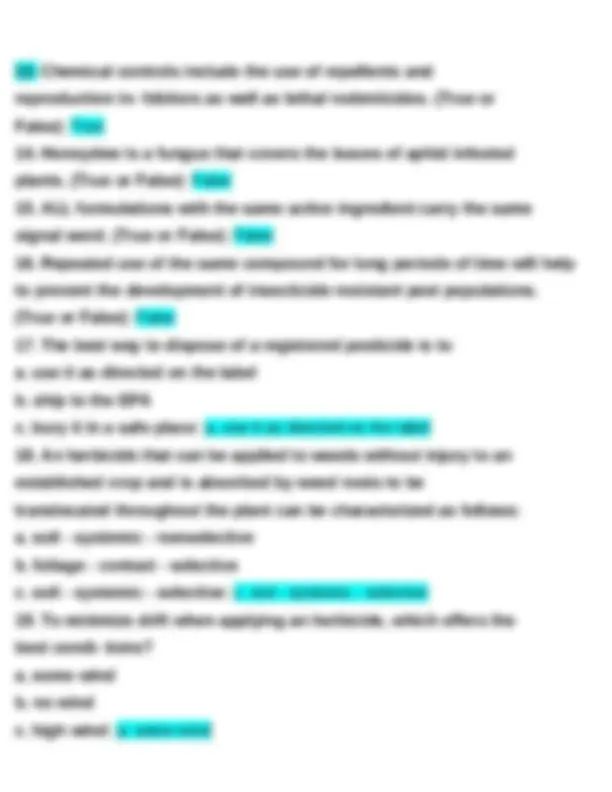
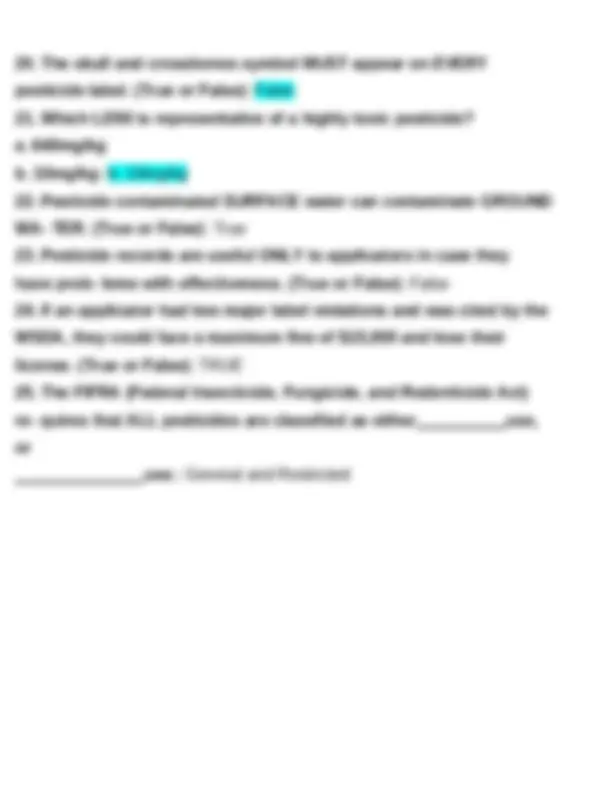
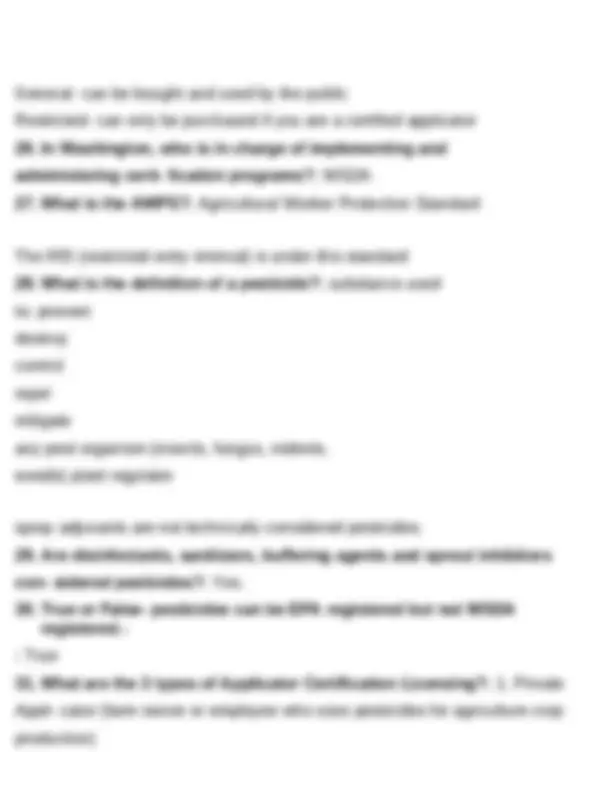
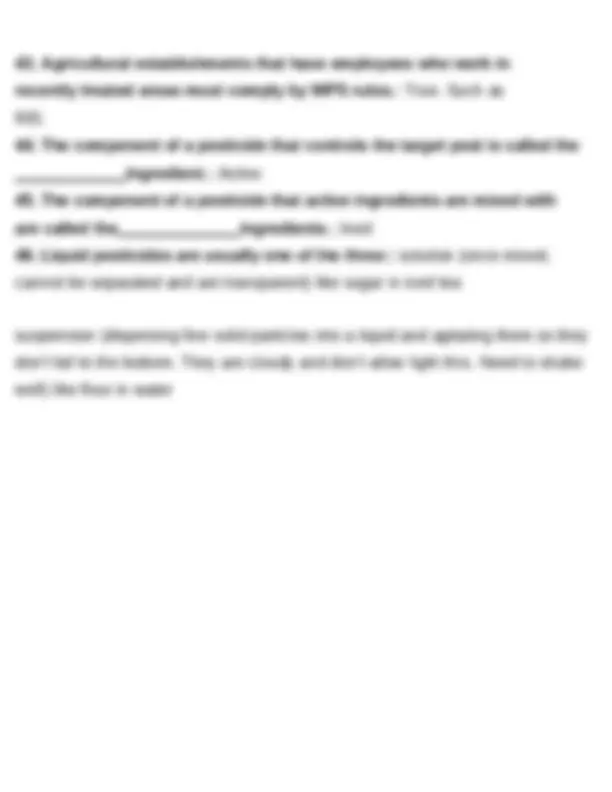
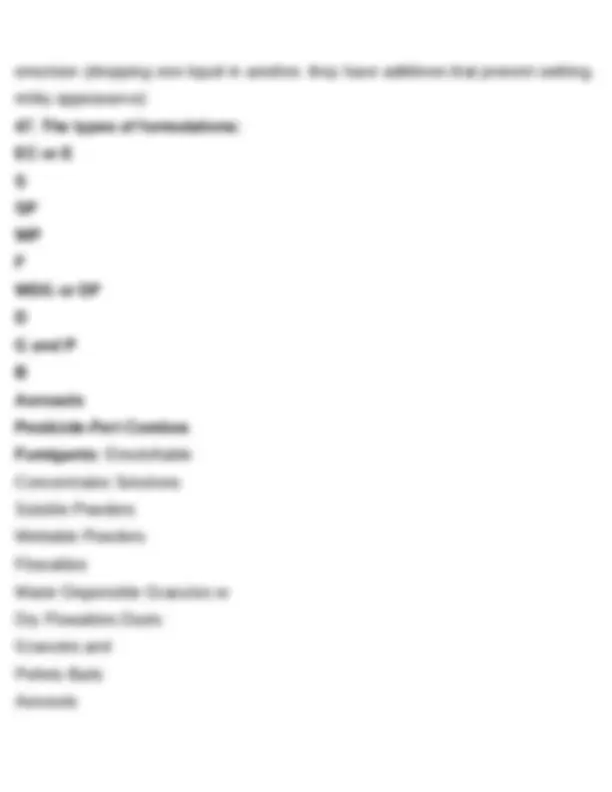
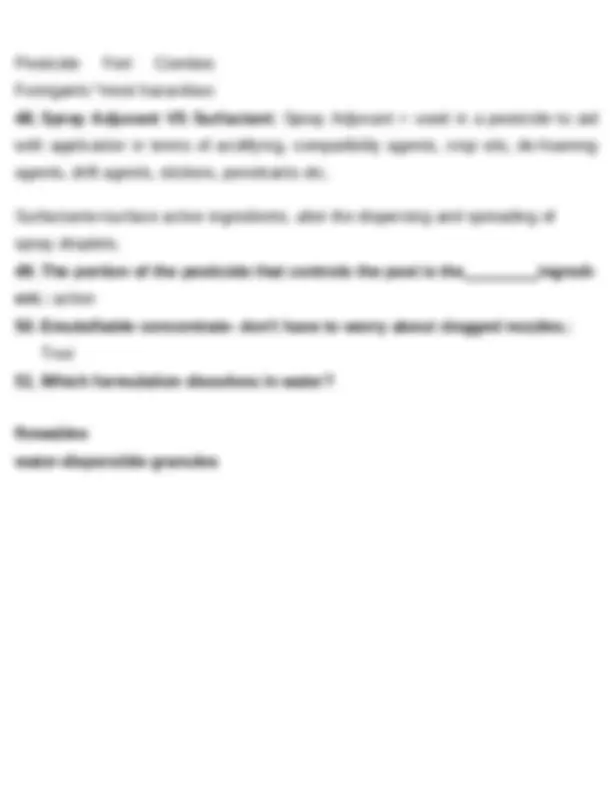
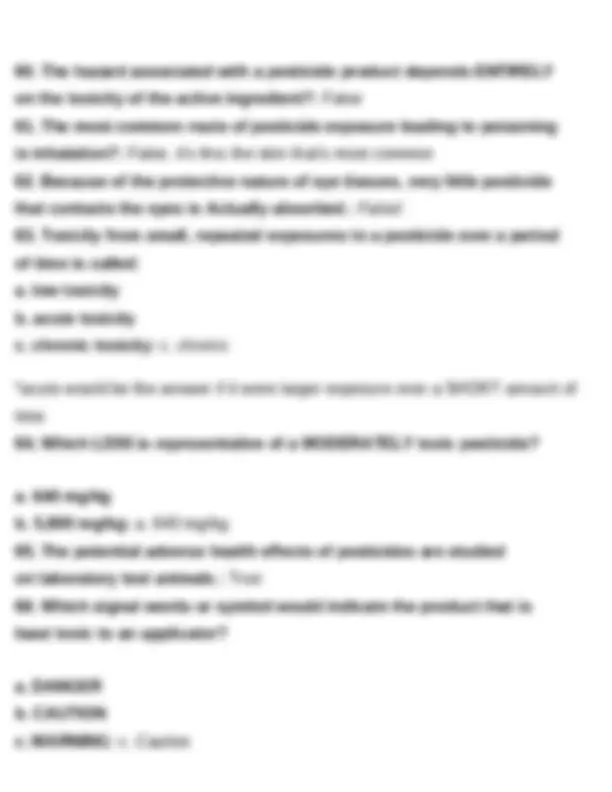
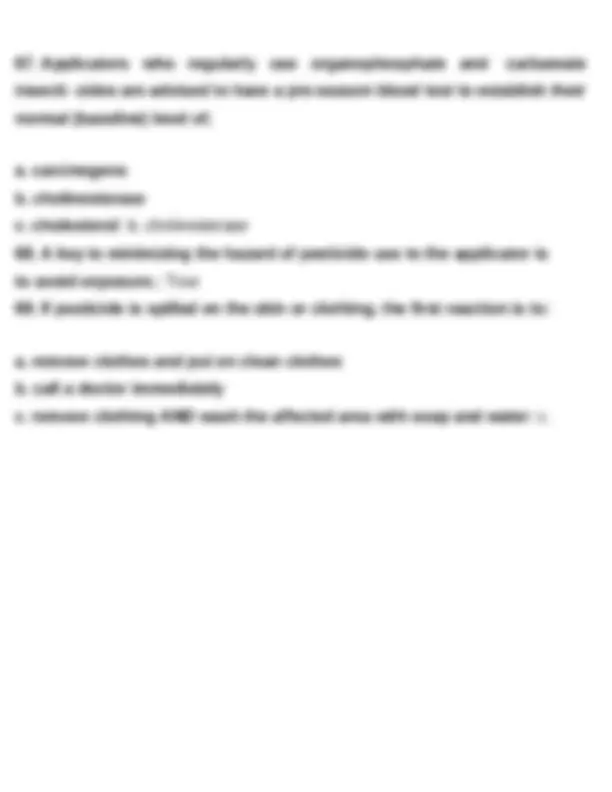
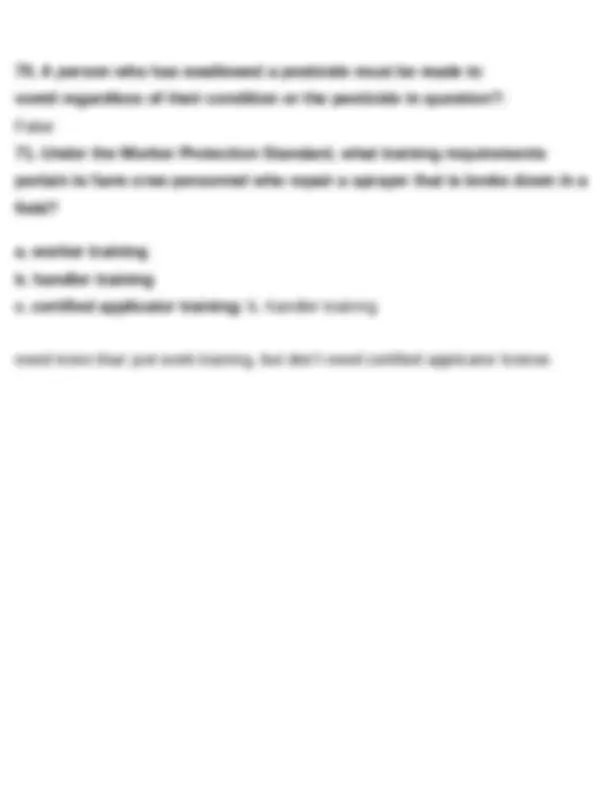


Study with the several resources on Docsity

Earn points by helping other students or get them with a premium plan


Prepare for your exams
Study with the several resources on Docsity

Earn points to download
Earn points by helping other students or get them with a premium plan
Community
Ask the community for help and clear up your study doubts
Discover the best universities in your country according to Docsity users
Free resources
Download our free guides on studying techniques, anxiety management strategies, and thesis advice from Docsity tutors
The latest update of private pesticide applicator license exam questions and answers, covering topics such as pest management, drift reduction, pesticide classification, and safety procedures. It is essential for individuals seeking to obtain or renew their private pesticide applicator license in the united states.
Typology: Exams
1 / 15

This page cannot be seen from the preview
Don't miss anything!










General- can be bought and used by the public Restricted- can only be purchased if you are a certified applicator
Pesticide Fert Combos Fumigants *most hazardous
soluble powders: soluble powders. the water dispersible granules disperse, not dissolve. and flowables are already in liquid form.